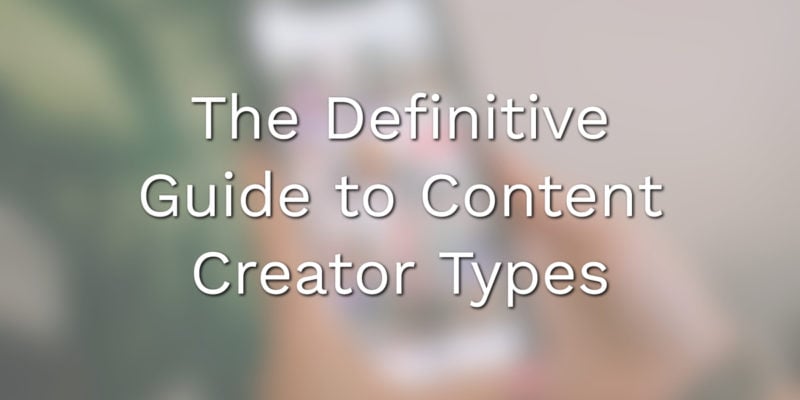I remember when “content creator” meant something simple—someone who wrote blog posts or maybe uploaded videos to YouTube. Fast forward to 2025, and the creator economy has exploded into a $250 billion industry with over 207 million active creators worldwide.
The landscape has become so diverse that calling yourself a “content creator” is like saying you “work with computers.” It’s technically accurate, but it doesn’t tell the whole story.
Think of content creators like Renaissance guild artisans. Just as medieval Florence had specialized craftspeople (painters, sculptors, goldsmiths), each with their specific trade, today’s creator economy has split into distinct specializations.
So here’s the real question: which type matches your skills and what you actually enjoy doing? Let’s break down every creator type that matters right now in 2025.
The Traditional Foundation Where Most Creators Start
Before we get into the newer, trendier creator types, let’s talk about the foundation. These traditional creator categories have been around for years, but they’ve changed dramatically. They’re not outdated—they’ve adapted. And many of today’s most successful creators still build their businesses on these proven models.
Bloggers and Written Content Creators

Bloggers have changed way beyond simple text-on-a-page websites. Modern bloggers operate as multimedia publishers, weaving together written expertise with visual storytelling and community building.
What sets successful bloggers apart isn’t just writing ability. It’s the patience to play the long game.
While TikTok creators might wake up to viral fame, bloggers build authority steadily. They create content that compounds in value over months and years. Search engines love this approach, which is why blogging still works remarkably well if you’re willing to invest the time.
Where they actually make money
- Ad revenue brings in $1-5 per 1,000 page views
- Affiliate marketing pays 3-10% commissions on products you recommend
- Email list monetization gives you an owned audience that platforms can’t take away
- Digital products like courses, templates, and guides
- Consulting services that build on your demonstrated expertise
WordPress powers over 40% of all websites globally, which makes it the dominant platform for serious bloggers. But here’s what smart bloggers do differently: they don’t pick just one platform. They use WordPress as home base while distributing content across Medium for built-in audiences and Substack for newsletter-style monetization.
The mistakes that kill beginner blogs
First mistake is trying to write about everything. I see this constantly—new bloggers cover technology, travel, food, and personal finance all on one site. You end up forgettable in every category.
Second mistake involves ignoring email list building from day one. Social media platforms can disappear or change algorithms overnight. Your email list belongs to you.
Think about it: would you rather have 50,000 Instagram followers or 5,000 email subscribers who actually open your messages? The email list wins every time.
YouTubers and Video Content Creators

YouTube creators have split into distinct subspecialties that need fundamentally different skills.
| Creator Type | Key Skills Required | Primary Revenue |
|---|---|---|
| Educational long-form | Teaching ability, subject expertise | Ad revenue ($2-25 per 1K views), courses |
| Entertainment | Charisma, storytelling, editing | Ad revenue, brand deals, merchandise |
| YouTube Shorts | Hook creation, trend awareness | Creator Rewards, audience building |
| Review channels | Product knowledge, honest analysis | Affiliate sales, brand partnerships |
YouTube has introduced AI-powered tools like Veo 3 Fast that transform content creation workflows. But here’s what hasn’t changed: personality and genuine connection still matter more than production polish.
Your viewers tolerate imperfect video quality. Poor audio or inauthentic presentation? That kills channels instantly.
What actually makes channels succeed
Forget subscriber counts for a moment. YouTube’s algorithm cares about watch time and viewer retention above everything else.
Videos over eight minutes allow multiple ad placements, but only if viewers actually watch them. Your thumbnail and title combination determines whether anyone clicks. The first 15 seconds determine whether they stay.
Get these elements right and YouTube’s discovery algorithm becomes your best friend.
The part nobody warns you about
Video editing eats time like nothing else. What looks like a polished 15-minute video often requires 6-8 hours of filming, editing, and post-production work.
Successful YouTubers either develop genuine editing skills, build teams, or find sustainable workflows that don’t require perfection in every frame. Which path fits your situation right now?
Podcasters and Audio Content Creators

Podcasts offer something unique in our visually saturated digital world—the ability to build deeply personal connections through voice alone.
With 584.1 million global podcast listeners in 2025, this medium has moved from niche hobby to mainstream content format.
Traditional interview shows still work, but we’re seeing explosive growth in narrative series that tell compelling stories, solo educational content from subject experts, video podcasts that serve dual purposes, and co-hosted shows that create dynamic chemistry.
Revenue streams that actually work
| Revenue Source | Typical Rates | Best For |
|---|---|---|
| Traditional sponsorships | $15-50 per 1,000 downloads | Shows with consistent download numbers |
| Premium subscriptions | $5-20 monthly per subscriber | Loyal audiences wanting exclusive content |
| Live events | $20-200 per ticket | Engaged communities in specific locations |
| Community access | $10-50 monthly | Shows with strong listener interaction |
But here’s the reality check: most podcasts die after seven episodes. Why? Because podcast growth feels painfully slow at first.
Unlike social media where you might get lucky with algorithm boosts, podcasts require patient audience building over 6-12 months. The creators who succeed treat their first year as skill development and audience research rather than expecting immediate returns.
Are you prepared for that timeline, or do you need faster feedback?
What you actually need to start
Forget the expensive podcast studio fantasy. A quality microphone (around $100-200) matters far more than fancy editing software.
Your speaking voice, interviewing ability, and content quality determine success—not your equipment budget. I’ve heard podcasts recorded on smartphone mics that built massive audiences simply because the content and conversation were compelling.
Instagram Influencers and Visual Creators
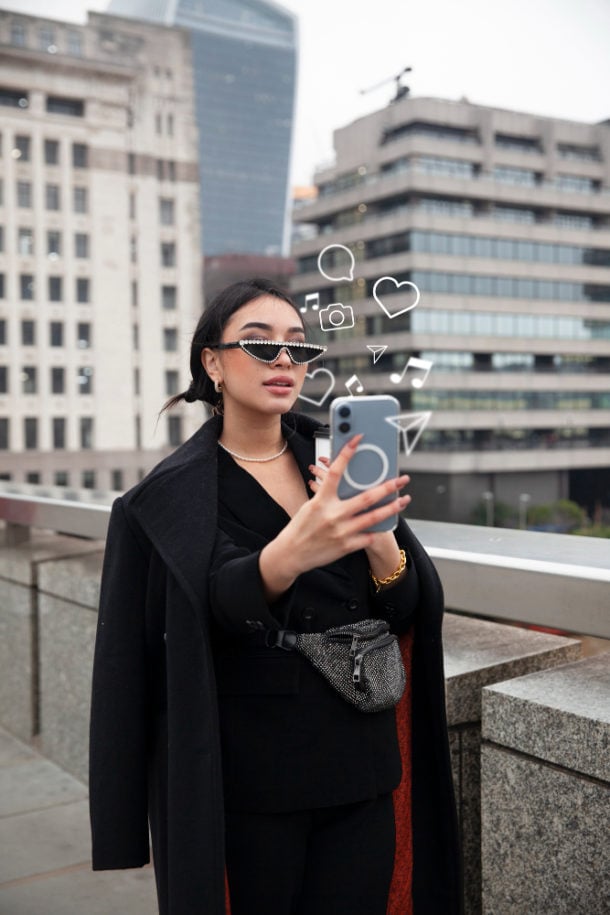
Instagram has transformed from a photo-sharing app into a comprehensive content ecosystem. Reels now generate significantly more engagement than static posts—studies show up to 75% higher engagement rates.
Here’s what successful Instagram creators do differently: they use each format for specific purposes.
The strategic format breakdown
- Reels serve as discovery engines that bring new eyeballs to profiles
- Stories create daily intimate touchpoints with existing followers
- Feed posts maintain the curated aesthetic that defines brand identity
- Live sessions enable real-time connection and community building
The best Instagram influencers think like magazine editors, carefully orchestrating content across all these formats.
The influencer tier reality
Micro-influencers with 10,000-100,000 followers often achieve 3-6% engagement rates. That’s significantly higher than macro-influencers who average 1-2%.
This explains why brands increasingly favor partnerships with multiple micro-influencers over single mega-influencer campaigns. Smaller audiences often mean more genuine connections and better conversion rates.
But here’s the mental health conversation nobody has early enough: Instagram creates unique psychological pressures. The constant comparison, public criticism, and pressure to maintain perfect aesthetics takes a real toll.
Every successful Instagram creator I know has developed strict boundaries. Designated “off” times, comment moderation strategies, and support systems. If you’re considering this path, what boundaries will you set from day one?
The Modern Wave of Platform-Native Creators
The creator types in this section didn’t exist a decade ago. They grew directly from the platforms themselves—TikTok creators wouldn’t exist without TikTok, and newsletter writers built their businesses on email-first platforms like Substack. These creators understand platform-specific features, algorithms, and audiences better than anyone else.
TikTok Creators and Short-Form Specialists
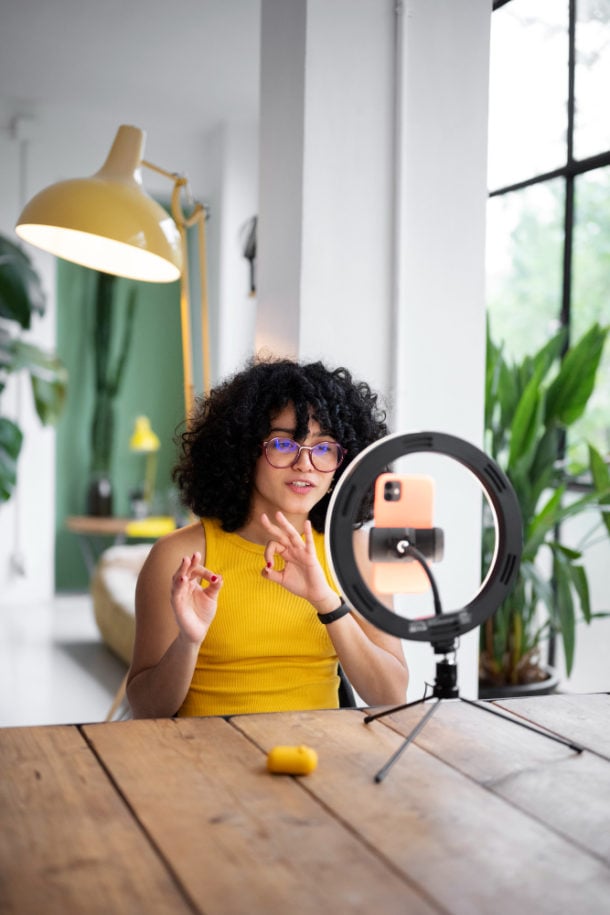
TikTok represents something genuinely different in content creation. The platform’s algorithm actually helps unknown creators find massive audiences.
Completion rate matters more than follower count. This means compelling content from zero-follower accounts can reach millions if viewers watch to the end.
TikTok’s Creator Rewards Program breakdown
- Pay rate ranges from $0.40-6.00 per 1,000 views (20x improvement over old Creator Fund)
- Requirements include 10,000+ followers and 100,000+ monthly views
- What drives higher rates: Longer videos (1-3 minutes) with high completion rates
The platform’s democratized discovery means you don’t need existing influence to succeed. Your 50th video might outperform everything you’ve created simply because it catches the algorithm at the right moment with the right hook.
This creates both opportunity and frustration. Every creator feels perpetually one video away from breakthrough or obscurity.
The content formula that works right now
The first three seconds determine everything. Successful TikTok creators obsess over opening hooks like visual surprises that stop the scroll, controversial statements that demand response, and immediate value propositions that promise payoff.
Using trending audio within 24 hours of its popularity surge gives your content algorithmic tailwinds. And contrary to early TikTok wisdom, longer videos (1-3 minutes) increasingly outperform ultra-short clips because they demonstrate genuine value.
The platform risk nobody mentions
Industry experts have described potential TikTok platform changes as potentially creating an “extinction-level event” for creators dependent solely on the platform.
Smart TikTok creators build audiences on Instagram Reels and YouTube Shorts at the same time. Algorithm changes or regulatory shifts won’t destroy their businesses overnight.
Are you building on multiple platforms, or betting everything on one?
Newsletter Writers and Email Content Creators

Newsletter creators represent perhaps the most sustainable creator business model. They build audiences they own rather than renting attention from platform algorithms.
Substack hosts over 35 million active subscriptions, which demonstrates strong market demand for quality written content delivered directly to inboxes.
What makes newsletters particularly powerful is the intimacy of the medium. When someone gives you their email address, they’re inviting you into their personal space in ways social media follows never achieve.
The economics that work
Let’s break down the math. Successful newsletter creators typically see 5-10% conversion rates from free to paid subscribers.
If you have a 10,000-person email list:
- 500-1,000 paid subscribers at $10 monthly = $5,000-$10,000 monthly recurring revenue
- Top newsletter creators report earning $100,000-$400,000 annually through this model
When newsletters make sense for you
This path works best if you genuinely enjoy writing and can maintain quality consistently, have specific expertise in defined niches, can publish weekly or bi-weekly without burning out, and prefer direct audience relationships over social media performance pressure.
Newsletter success comes from depth over breadth. You become the go-to expert on something specific rather than covering everything superficially.
The launch strategy that actually works
Start with valuable free content that demonstrates your expertise. Build trust over 8-12 weeks before introducing paid tiers.
Use lead magnets—free guides, templates, or resources—to grow your email list. Cross-promote on social platforms where your target audience already spends time.
Check out our complete best lead magnet creator tools for options.
The creators who rush to monetization without establishing value first almost always fail. Have you proven your value through free content yet?
Live Streamers and Real-Time Content Creators

Live streaming creates unique creator opportunities across gaming, education, entertainment, and social commerce.
Twitch revenue breakdown
| Revenue Stream | How It Works | What You Earn |
|---|---|---|
| Subscriptions | Monthly viewer support at $4.99, $9.99, or $24.99 tiers | ~$2.50 per $4.99 sub (50% split) |
| Bits | Viewer donations during streams | 1 cent per bit |
| Ad revenue | Pre-roll, mid-roll, and display ads | Varies by viewership |
| Brand deals | Sponsored streams and integrations | Negotiated rates |
What separates successful streamers from struggling ones isn’t gaming skill or production quality. Personality and community building make the difference.
Viewers return to streamers who make them feel part of something. Who remember their names. Who create inside jokes and shared experiences.
The best live streamers function as digital community centers where the audience entertainment comes as much from each other as from the host.
The hidden challenge
Live streaming demands consistent scheduling and real-time performance skills that many creators underestimate. You can’t edit out mistakes or awkward moments.
You’re live, which means managing chat, delivering content, and maintaining energy at the same time for hours. This makes streaming uniquely exhausting compared to pre-recorded content creation.
Can you perform consistently under that pressure, or would you prefer content you can edit and perfect?
Beyond gaming
Live shopping has exploded as a creator category, particularly on TikTok and Instagram. These creators combine product demonstration, entertainment, and sales in real-time.
They create urgency through limited-time offers and exclusive deals. It’s QVC reimagined for social media, and early movers are building substantial businesses in this space.
New Categories Taking Shape Right Now
These creator types are so new that most people don’t even recognize them as distinct categories yet. But they’re growing fast, and early movers in these spaces are building significant advantages. Some involve cutting-edge technology, while others simply approach content creation from completely different angles than traditional creators.
AI-Assisted Creators and Efficiency Experts

AI-assisted creators represent the newest category. They use artificial intelligence for content creation, optimization, and scaling while maintaining human creativity and authenticity.
Over 80% of content creators now use AI tools in some capacity for their workflow.
What this actually looks like in practice
| AI Tool Category | Popular Tools | What They Do |
|---|---|---|
| Writing assistance | ChatGPT, Claude, Jasper | Ideation, drafts, editing support |
| Visual creation | Midjourney, Leonardo | Image generation, design concepts |
| Video production | Synthesia, HeyGen | AI avatars, voiceovers, editing |
| Audio generation | ElevenLabs | Voiceover work, podcast editing |
The competitive advantage comes from strategic tool integration, not complete reliance on AI-generated content.
The quality control requirement
AI-generated content requires human oversight for brand voice consistency, factual accuracy, and ethical considerations.
The creators succeeding with AI treat it as a productivity multiplier, not a creativity replacement. They use AI to handle repetitive tasks and first drafts while reserving human creativity for strategy, unique insights, and final quality control.
Content ideation that used to take hours now takes minutes with AI brainstorming partners. Video script writing accelerates through AI-assisted drafts that creators refine. Thumbnail testing and optimization improve through AI-powered analytics.
The creators who resist these tools aren’t protecting authenticity. They’re handicapping efficiency.
But AI can’t replicate your unique experiences, perspectives, and personality. The winning approach uses AI for efficiency while doubling down on human elements that create genuine connections.
Share personal stories. Unique insights. Authentic reactions. Real expertise. AI handles the repetitive work so you can focus on the irreplaceable human elements.
What repetitive tasks in your current workflow could AI handle right now?
Virtual Influencers and Digital Personalities
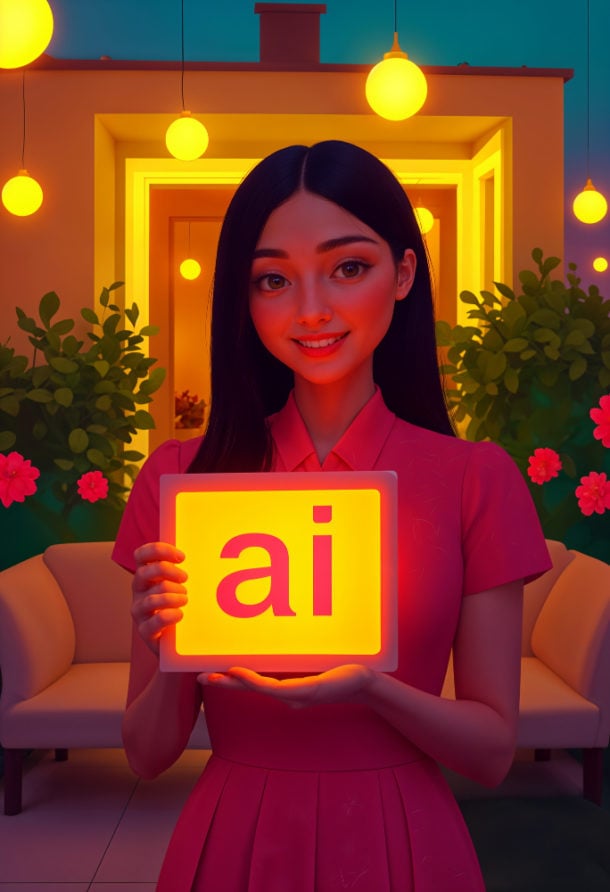
Virtual influencers represent a $8.3 billion market in 2025 growing at 39.5% annually. These AI-generated personas partner with brands, build followings, and generate revenue without physical existence.
What makes virtual influencers fascinating isn’t the technology. It’s the audience acceptance.
Millions of people follow, engage with, and form parasocial relationships with characters they know aren’t human. This suggests we’re moving toward a future where content quality and entertainment value matter more than creator authenticity in some niches.
The business opportunity
Creating virtual influencers requires significant upfront investment in character design, animation technology, and content production.
But once established, these digital personalities offer consistency and control impossible with human creators. No scandals, no burnout, no schedule conflicts. Brands find this predictability appealing, even if audiences sometimes prefer human authenticity.
Is this a path you’d consider, or does the human element matter too much to you?
Social Commerce Hosts and Live Shopping Creators

Live shopping hosts combine entertainment, product demonstration, and real-time sales in formats that feel more like interactive TV shows than traditional e-commerce.
TikTok Live Shopping, Instagram Live Shopping, and Amazon Live have created entirely new creator categories focused on conversion rather than content alone.
What makes this work
Successful live shopping hosts understand retail psychology while maintaining entertainment value.
They create urgency through limited inventory and time-bound offers. They demonstrate products thoroughly while maintaining rapid pacing that keeps viewers engaged. And critically, they build trust through genuine product knowledge and honest recommendations rather than pure salesmanship.
The entry barriers are lower than you think
Unlike traditional influencers who need massive followings before monetizing, live shopping hosts can generate revenue right away through commission-based sales.
Small audiences with high trust often outperform large audiences with low engagement when conversion metrics matter.
Have you watched live shopping streams? What made you stay and watch versus scrolling past?
Platform Strategy and Where Different Creators Thrive
Understanding platforms isn’t optional anymore—it’s essential. Each platform has its own ecosystem, algorithm, and audience behavior. What works on YouTube fails on TikTok. Instagram strategies don’t translate to LinkedIn. Smart creators match their content type to the platforms where it naturally thrives, rather than forcing content into platforms where it doesn’t fit.
YouTube as the Comprehensive Ecosystem
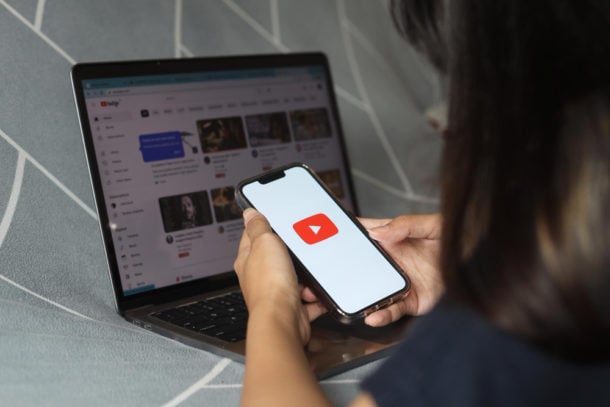
YouTube remains the most robust creator monetization platform. Ad revenue sharing, channel memberships, Super Chat, shopping integration, and comprehensive analytics help creators understand and grow their audiences.
Why YouTube’s algorithm rewards specific creator types
Educational content creators excel because searchable evergreen content continues generating views and revenue for years. Entertainment creators benefit from recommendation algorithms that surface engaging content to new viewers. Tech and specialized channels command premium advertising rates with valuable audience demographics.
YouTube prioritizes watch time and viewer retention over subscriber count. A channel with 50,000 engaged subscribers often outperforms one with 500,000 casual followers.
This creates opportunities for niche creators who deeply serve specific audiences rather than chasing mass appeal.
The format strategy that works
Successful YouTube creators now maintain presence across multiple formats. They produce long-form videos for depth and ad revenue, Shorts for discovery and new audience acquisition, and live streams for community building and real-time engagement.
Each format serves distinct purposes in a comprehensive channel strategy. Are you using all three, or focusing on just one?
Instagram and Visual Dominance

Instagram’s shift toward video and entertainment has reshaped creator opportunities. Users spend more time on Reels and video content, which makes static image posts less effective for reach and growth.
Creator type advantages
| Creator Type | Why They Excel | Monetization Focus |
|---|---|---|
| Lifestyle influencers | Fashion, travel, aspirational content | Brand partnerships, affiliate |
| Visual artists | Portfolio showcase, client acquisition | Service sales, print sales |
| Local businesses | Shopping features, local discovery | Direct product sales |
| Micro-influencers | Higher engagement rates (3-6%) | Brand deals, authentic partnerships |
The authenticity paradox
Instagram rewards polished, aesthetically pleasing content while audiences increasingly value authenticity and imperfection.
Successful creators navigate this tension by maintaining cohesive visual branding while sharing genuine moments and behind-the-scenes content that builds real connections.
How do you balance polish with authenticity in your current content?
LinkedIn and the Professional Creator Economy

LinkedIn’s Creator Mode features like newsletters, live video, and enhanced analytics help professionals build authority in their industries.
This platform creates unique opportunities for B2B content creators, thought leaders, and professional service providers.
What works on LinkedIn right now
Professional storytelling combines personal experiences with business lessons. Data-driven content backed by original research performs well. Authentic face-to-camera video with genuine expertise resonates. Newsletter writing provides in-depth industry analysis.
The key difference from other platforms is that LinkedIn audiences consume content during working hours with professional development mindsets rather than entertainment-seeking behaviors.
The monetization difference
LinkedIn creators rarely make money directly from the platform. Instead, they monetize through speaking engagements (5x more invitations than non-creators), consulting services that build on demonstrated expertise, course sales for professional education, job opportunities (3x more offers), and B2B brand partnerships.
Your LinkedIn content becomes the best promotion for higher-value services. Are you treating it that way?
The Money Reality and How Different Creator Types Actually Earn
Let’s talk about what creators actually make. Not the highlight reel numbers you see in “I made $100K in 3 months” videos, but the real economics of creator businesses. Revenue varies wildly by platform, creator type, audience size, and niche. Understanding these economics helps you choose paths with realistic earning potential for your goals.
Platform Creator Programs and Direct Revenue
Creator earnings vary dramatically by platform and creator type. The majority of creators earn modest incomes while the top 4% earn over $100,000 annually.
This massive range reflects the winner-take-most economics that characterize platform-based revenue models.
Platform-by-platform breakdown
| Platform | Requirements | Typical Earnings | Payment Factors |
|---|---|---|---|
| YouTube Partner | 1K subs, 4K watch hours | $2-25 per 1K views | Niche, audience demographics |
| TikTok Creator Rewards | 10K followers, 100K monthly views | $0.40-6.00 per 1K views | Video length, completion rate |
| Instagram Monetization | Varies by feature | Limited direct revenue | Primarily brand partnerships |
| Twitch Affiliate | 50 followers, 8 hours streamed | ~$2.50 per $4.99 sub | Viewer support, consistency |
Tech and finance content commands premium rates while entertainment and vlog content earns lower CPMs. Your niche choice impacts your earning potential significantly.
Which platforms align with your content style and monetization goals?
Brand Partnerships and The Relationship Game
Brand partnerships remain the primary revenue source for most successful creators, but the relationship dynamics have changed significantly.
Partnership rate benchmarks
Micro-influencers with 10,000-100,000 followers typically earn $100-500 per post. Mid-tier creators with 100,000-1M followers command $1,000-10,000+ per campaign. Top-tier influencers negotiate six-figure campaign deals.
What brands actually value
Engagement rates matter more than follower counts. Authentic audience connections that drive real action outperform massive reach with low engagement.
Niche expertise in specific verticals like fitness, finance, or parenting commands premium rates because brands pay for access to defined demographics.
The shift toward long-term partnerships
One-off sponsored posts are declining while brand ambassador relationships grow. These longer-term arrangements provide creators with predictable income while giving brands deeper audience integration and more authentic storytelling opportunities.
The creators building sustainable businesses focus on these relationships rather than constantly chasing new brand deals.
Are you positioning yourself for one-off deals or long-term partnerships?
Subscription Models and Recurring Revenue
Subscription platforms provide the recurring revenue that makes creator businesses sustainable and predictable.
Platform options and what they offer
Patreon gives you community and exclusive content access. Substack provides newsletter subscriptions with built-in audience. YouTube memberships offer platform-native monetization. Discord enables community access and direct interaction. Circle and Mighty Networks combine comprehensive community-content packages.
Subscription success requires consistent value delivery that justifies recurring payments. This might mean exclusive content not available elsewhere, community access connecting like-minded people, direct creator interaction through Q&As or calls, educational resources providing ongoing learning, or advance access to regular content before public release.
The creators who succeed clearly communicate value and deliver reliably. Missing weeks or diluting quality kills subscription businesses quickly.
What exclusive value could you offer subscribers right now?
Product Sales and Building Real Businesses
Many creators eventually move beyond platform monetization and brand deals toward selling their own products.
Digital courses, physical merchandise, software tools, or consulting services represent the highest-value monetization. You capture full value rather than sharing revenue with platforms or brands.
Digital products scale infinitely
Online course creators can build substantial businesses selling expertise. Successful courses are priced anywhere from $50 to $5,000+ depending on depth and outcomes.
The key is proving expertise through free content before asking audiences to pay for structured learning. Have you demonstrated enough expertise to sell a course yet?
Physical products require different thinking
Merchandise, custom products, or branded goods require inventory management, fulfillment logistics, and customer service.
But they create tangible connections between creators and audiences that digital products can’t match. The most successful approaches use print-on-demand services to minimize upfront investment and risk.
Critical Mistakes That Derail Creator Careers
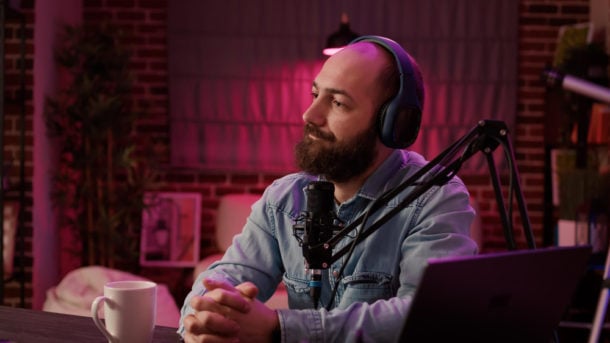
I’ve watched hundreds of creators build momentum only to make preventable mistakes that destroy their businesses. These aren’t small tactical errors—they’re fundamental strategic mistakes that compound over time. The good news is that once you know what to watch for, you can avoid them entirely. These mistakes show up across all creator types, which makes them worth understanding before you commit to any particular path.
The Single Platform Trap
I’ve watched too many creators build impressive audiences on single platforms only to see algorithm changes devastate their reach and revenue overnight.
Platform dependency creates existential risks for creator businesses, especially given regulatory uncertainties and rapidly changing platform policies.
The mitigation strategy
Build on 3-4 complementary platforms at the same time rather than one after another. Your primary platform gets 60% of your effort, but maintaining presence across Instagram, TikTok, YouTube, and email means algorithm changes on any single platform don’t destroy your business.
Think of it as diversification. The same principle that protects investment portfolios protects creator businesses.
The owned audience imperative
Email lists, websites, and direct subscriber relationships represent owned assets no platform can take away.
Every successful creator I know treats email list building as equally important as social media growth, even though email metrics seem less impressive than follower counts.
Which platforms are you currently building on, and what’s your backup plan?
Monetization Timing Errors
Monetizing too early damages audience trust and long-term growth. Waiting too long leaves money on the table and makes building sustainable businesses harder.
The balance point typically comes after establishing consistent content quality and genuine audience engagement. Usually 3-6 months for fast-growing creators, 6-12 months for steady builders.
The revenue stream sequence that works
Start with affiliate marketing and platform creator programs because they don’t require direct audience asks. Add brand partnerships after building engagement metrics that demonstrate value. Launch products after proving expertise through consistent content. Scale premium offerings after validating audience demand at lower price points.
The trust bank concept
Every piece of content you create either deposits into or withdraws from your audience trust bank.
Providing value deposits trust. Selling deposits trust if the product genuinely helps people. But selling products that disappoint or pitching constantly without value creation quickly depletes trust balances that took months to build.
Are you depositing more than you’re withdrawing right now?
The Quality-Quantity Balance Disaster
Platform algorithms reward consistency, which pushes creators toward daily posting schedules.
But maintaining quality while hitting aggressive posting frequencies burns out most creators or leads to declining content quality that damages long-term audience relationships.
Finding sustainable rhythms
The best creators identify posting frequencies they can maintain indefinitely without sacrificing quality.
For some, this means daily TikTok videos. For others, it’s weekly YouTube videos or bi-weekly newsletter editions. The key is choosing ambitious but sustainable targets rather than unsustainable sprints that lead to burnout or inconsistency.
AI assistance done right
AI tools help maintain consistency without sacrificing quality. They handle ideation, first drafts, and editing efficiency.
But over-relying on AI creates generic content that fails to differentiate you in crowded markets. Use AI to amplify your unique perspective and expertise, not replace it.
What posting frequency can you actually maintain for the next 12 months?
Business Fundamentals Neglect
The most common creator failure isn’t creative. It’s treating content creation as a hobby while expecting business-level income.
Content creators must understand tax obligations, business structure, and financial planning to build sustainable creator businesses.
Essential business practices
Separate business banking from personal accounts from day one. Set aside 25-30% of revenue for taxes to avoid massive surprise bills. Consider LLC formation once earning exceeds $50,000 annually. Track expenses meticulously—equipment, software, education, workspace costs all reduce taxable income.
The contract reality
Every brand deal, collaboration, and partnership should involve written agreements. Specify deliverables, timelines, payment terms, and usage rights.
Verbal agreements and handshake deals create misunderstandings that damage relationships and leave money on the table.
Are you running your creator work like a business or a hobby?
Your Creator Type and Finding the Right Path

Now that you understand the full range of creator types, how do you actually choose? This decision matters more than most people realize because switching paths later means starting over in many ways. The right creator type aligns with your natural abilities, work preferences, and lifestyle goals—not just what looks exciting or profitable from the outside.
Matching Skills to Creator Categories
The best creator path aligns your natural skills and interests with market opportunities.
Writing ability and patience suggest blogging or newsletter writing. Verbal communication skills and personality point toward video content or podcasting. Visual aesthetics and storytelling indicate Instagram or photography-focused creation.
The honest self-assessment questions
Do you prefer working alone or building teams? Can you maintain consistency over months without immediate rewards? Are you comfortable on camera or do you prefer behind-the-scenes creation? Do you want to build something long-term or experiment with trendy formats?
Your answers dramatically narrow viable creator paths.
The testing phase approach
Rather than committing to one path right away, test 2-3 creator types at the same time for 30-60 days.
Pay attention to which format feels most natural, where audience response seems strongest, and which type you can sustain without exhaustion. The intersection of these factors indicates your optimal creator path.
What creator type feels most natural when you think about creating content?
Investment Requirements by Creator Type
Minimal investment paths
Blogging needs just web hosting at $5-20 monthly and your time. Newsletter writing on Substack starts completely free. TikTok content needs only a smartphone and creativity.
These low-barrier options let you start right away without financial risk.
Moderate investment categories
| Creator Type | Essential Equipment | Estimated Cost |
|---|---|---|
| YouTube | Camera, microphone, editing software, lighting | $500-1,200 |
| Podcasting | Quality microphone, recording software, hosting | $200-400 |
| Good smartphone, editing apps, planning tools | $100-300 |
Higher investment territories
Professional video production requires camera gear at $2,000-10,000+, lighting equipment at $500-2,000, editing computers at $1,500-3,000, and editing software subscriptions.
But starting at these investment levels before proving audience demand risks substantial financial losses.
Which investment level fits your current situation and risk tolerance?
Timeline Expectations by Creator Type
Fast-growing platforms
TikTok and YouTube Shorts offer the fastest potential growth. Creators occasionally reach 100,000 followers in weeks through viral content.
But this volatility cuts both ways. Rapid growth often proves unsustainable without substance backing the viral moments.
Steady build platforms
YouTube long-form content, blogging, and podcasting typically require 6-18 months before generating meaningful traction.
The slow start frustrates many creators, but the foundations built during this period create more sustainable businesses than viral-dependent paths.
Long-game strategies
Newsletter writing, educational content creation, and professional platform authority building on LinkedIn often take 12-24 months before reaching critical mass.
But these paths attract higher-value audiences and command premium monetization once established.
Which timeline matches your patience level and financial needs?
What’s Different Now

The creator economy in 2025 operates under fundamentally different rules than even two years ago. AI integration, community focus, revenue diversification, and professionalization have reshaped what it means to be a successful creator. Understanding these shifts helps you build for today’s reality rather than yesterday’s playbook.
AI Integration as Standard Practice
The biggest shift from even a year ago is that over 80% of content creators use AI tools to produce higher quality content more efficiently.
AI tools have moved from experimental to essential for competitive creators.
What this means right now
Content ideation that used to take hours now takes minutes with AI brainstorming partners. Video script writing accelerates through AI-assisted drafts that you refine. Thumbnail testing and optimization improve through AI-powered analytics.
The creators who resist these tools aren’t protecting authenticity. They’re handicapping efficiency.
But AI can’t replicate your unique experiences, perspectives, and personality. The winning approach uses AI for efficiency while doubling down on human elements that create genuine connections.
Share personal stories. Unique insights. Authentic reactions. Real expertise. AI handles the repetitive work so you focus on the irreplaceable human elements.
Which parts of your current workflow could AI handle today?
Community Over Content
The creator economy increasingly rewards community building over content broadcasting.
Creators who help audience members connect with each other build more engaged, loyal, and monetizable audiences than those focused solely on producing content.
What this looks like in practice
Discord servers where members interact with each other thrive. Comment sections where conversations happen beyond praising the creator generate value. Live events create shared experiences. Collaborative projects involve audience participation.
The shift moves from “creator performs for audience” to “creator helps community experiences happen.”
The business case
Community-focused creators weather algorithm changes better because their value comes from connection facilitation rather than algorithm-dependent content distribution.
They monetize more effectively because communities will pay for access to each other as much as access to the creator.
And they build more sustainable businesses because communities become self-perpetuating rather than requiring constant content feeding.
Are you building a community or just an audience?
Revenue Diversification Requirements
Single revenue sources create fragile creator businesses.
The successful 2025 creators I study typically generate income from 4-7 sources like platform creator programs, brand partnerships, product sales, subscriptions, affiliate marketing, speaking engagements, and consulting or services.
Why this matters
When one revenue stream declines (algorithm changes reduce ad rates, a brand partnership ends, or platform policy shifts), diversified creators absorb the impact without business-threatening disruption.
Creators dependent on single revenue sources face existential crises during platform changes.
The practical approach
Start with one revenue stream and prove it works before adding complexity. Then strategically add complementary income sources every 3-6 months rather than trying to build everything at the same time.
The goal is resilient revenue portfolio, not maximizing every possible income stream regardless of fit.
How many revenue streams are you currently building?
Professionalization and Accountability
The creator economy has matured beyond “just have fun and be yourself” into professional media businesses with higher standards.
Brands increasingly demand measurable ROI from creator partnerships rather than paying for vanity metrics like follower counts without demonstrated business impact.
What professional creators do differently
They track detailed analytics beyond surface metrics. They understand their audience demographics and psychographics thoroughly. They communicate professionally in brand negotiations. They deliver consistently on commitments. They think strategically about long-term business building.
The opportunity this creates
As standards rise, professional creators separate from amateurs. Brands pay premium rates to creators who demonstrate business results and professional reliability.
This professionalization raises barriers to entry but increases rewards for those who treat creator work as legitimate business rather than casual hobby.
Are you operating as a professional or experimenting as a hobbyist?
Specialized Creator Niches Worth Exploring

Beyond the main creator categories, there are specialized niches that combine elements from multiple types or serve highly specific audiences. These niches often have less competition but require deeper expertise or unique positioning. If you have specialized knowledge or skills, these categories might offer better opportunities than competing in broader creator markets.
Educational Content Creators and Teaching at Scale
Educational creators build businesses by packaging expertise into digestible content that helps audiences solve problems or develop new skills.
This category spans academic subjects, professional development, hobby instruction, and life skills teaching.
The unique advantage
Educational content compounds in value over time. A well-made tutorial or explanation remains relevant for years, continuing to attract viewers and generate revenue long after publication.
Educational content consistently commands higher advertising rates than entertainment because it attracts motivated learners that advertisers value.
Where educational creators thrive
| Platform | Best For | Key Advantage |
|---|---|---|
| YouTube | Long-form tutorials, deep dives | Searchability, evergreen value |
| Skillshare/Udemy | Structured courses | Built-in course marketplace |
| TikTok/Instagram | Quick tips, simplified concepts | Viral potential, broad reach |
| Your own website | Premium courses | Full control, higher margins |
The best educational creators distribute across multiple platforms, adapting content length and depth to each platform’s strengths.
Monetization beyond ads
Course sales represent the highest-value revenue stream for educational creators. Once created, digital courses sell repeatedly without inventory costs or fulfillment logistics.
Successful course creators price offerings between $50-500 for most topics, with specialized professional development courses commanding $1,000-5,000+.
The economics work when you build free content demonstrating expertise before asking audiences to pay for structured learning.
What expertise do you have right now that people would pay to learn?
Check out our complete 82 proven ways for you to build your content creation business
Entertainment Creators and Pure Enjoyment Value
Entertainment creators succeed by making people laugh, feel inspired, or escape daily stress.
This broad category includes comedians, storytellers, challenge creators, reaction video makers, and variety content producers who prioritize audience enjoyment over education or information.
What separates successful entertainers
Personality and authenticity matter more than production quality. Audiences forgive technical imperfections when creators deliver genuine entertainment value.
The most successful entertainment creators develop recognizable personas, recurring formats, and audience inside jokes that create community around shared entertainment experiences.
The discoverability advantage
Entertainment content benefits from platform algorithms designed to maximize user engagement. Funny videos, surprising moments, and emotionally resonant stories get shared widely.
This creates organic reach that educational or informational content struggles to match.
The sustainability challenge
Entertainment trends shift rapidly, which makes it harder to build evergreen content that continues generating value over years.
Successful entertainment creators either ride trend waves constantly or develop signature styles that transcend temporary trends. The latter approach builds more sustainable businesses but requires stronger creative vision.
Which approach fits your personality better—chasing trends or developing signature style?
Product Reviewers and Unboxers as Consumer Guides
Product review creators help audiences make purchasing decisions by providing detailed analysis, hands-on testing, and honest assessments.
This category includes tech reviewers, beauty product testers, toy unboxers, and essentially any niche where consumers need guidance before buying.
Why brands love this creator type
Product reviewers directly influence purchasing decisions, which makes them valuable partners for companies.
A positive review from a trusted creator can generate substantial sales, justifying significant brand partnership investments and affiliate commission structures.
The credibility requirement
Trust forms the foundation of successful review content. Creators who accept payment for positive reviews without disclosure quickly lose audience trust and destroy their businesses.
The most successful product reviewers maintain editorial independence, decline partnerships with products they don’t genuinely endorse, and transparently disclose all sponsorship relationships.
Revenue model advantages
Affiliate marketing works exceptionally well for product reviewers, often generating 30-50% of total revenue.
Typical affiliate commission rates
- Amazon Associates pays 1-10%
- Tech products pay 5-15%
- Software (SaaS) pays 20-50% recurring
- Digital products pay 30-75%
When combined with brand partnerships, ad revenue, and potential consulting work for companies wanting product feedback, review creators build diverse revenue streams tied directly to their content focus.
What products do you already use and love enough to review honestly?
Lifestyle and Personal Brand Creators
Lifestyle creators build audiences by sharing their lives, perspectives, and daily experiences in ways that inspire or entertain followers.
This category encompasses travel bloggers, daily vloggers, wellness influencers, and anyone whose personal life becomes their content foundation.
The double-edged sword
Lifestyle content requires less specialized expertise than educational or review content—your life becomes the product.
But this creates pressures around authenticity, privacy, and the need to constantly generate interesting life experiences worth documenting.
The most successful lifestyle creators carefully curate what they share, maintaining boundaries that protect personal wellbeing while satisfying audience interest.
Monetization through personal brand
Lifestyle creators monetize primarily through brand partnerships with companies wanting to associate with their image and audience.
Travel lifestyle creators partner with tourism boards, luggage companies, and travel booking platforms. Wellness influencers work with fitness brands, supplement companies, and health-focused products. Parenting creators collaborate with baby products, educational toys, and family services.
The business model requires building strong enough personal brands that companies pay for association.
The authenticity shift
Audiences have become increasingly sophisticated about lifestyle content, valuing genuine experiences over manufactured perfection.
The polished, flawless lifestyle content that dominated Instagram five years ago now often performs worse than authentic, imperfect sharing that feels more relatable and real.
How much of your personal life are you comfortable sharing publicly?
B2B and Professional Thought Leaders
B2B creators build authority within professional industries, helping other businesses and professionals improve their work.
This includes marketing consultants sharing strategies, software developers teaching coding, business coaches offering growth advice, and essentially any professional expertise packaged for other professionals.
Why B2B monetizes differently
Professional audiences will pay significantly more for content that helps them earn more money or advance their careers.
B2B creators successfully charge $500-5,000+ for courses and consulting services that consumer-focused creators couldn’t sustain at those price points.
The smaller audience sizes typical of B2B niches matter less when individual customers generate substantially higher revenue.
Platform strategy differences
LinkedIn dominates professional content distribution, but B2B creators also succeed on YouTube for in-depth tutorials and case studies, through email newsletters for ongoing relationship building, via podcasts for thought leadership positioning, and at industry conferences for speaking opportunities.
The key difference is that B2B content gets consumed during working hours with professional development mindsets rather than entertainment-seeking behaviors.
The credibility requirement
B2B audiences demand demonstrated expertise and real results before trusting advice.
Successful B2B creators typically share case studies, real examples, and transparent results from their own experience rather than theoretical knowledge.
The “do as I say, not as I do” approach fails in professional content where audiences expect creators to practice what they preach.
What professional expertise could you teach other professionals right now?
Community Managers and Facilitators
Community-focused creators succeed by helping audience members connect with each other rather than positioning themselves as central figures.
They excel at creating spaces where community members interact with each other, building sustainable engagement independent of constant content creation.
The business model shift
Instead of monetizing attention through ads or sponsorships, community builders typically charge for access through membership fees for Discord servers at $5-50 monthly, subscriptions for premium community tiers at $10-100 monthly, event tickets for in-person gatherings at $50-500 per event, and exclusive workshops or masterminds at $200-2,000+.
This model provides more predictable recurring revenue than content-dependent monetization.
Platform ecosystem
Discord handles real-time community chat and voice channels. Circle provides structured community platforms with courses and content. Mighty Networks combines community with content libraries. Facebook Groups offer established user bases and free starting points.
Successful community builders typically maintain presence across 3-4 platforms with distinct purposes rather than trying to force all community activity into single platforms.
What makes communities thrive
Active moderation maintains positive culture. Clear community guidelines set expectations. Diverse engagement opportunities go beyond just creator interaction. Recognition systems reward active members. Regular events or activities bring members together.
Communities fail when they become one-way broadcast channels or when moderation allows toxic behavior to drive away positive members.
Are you more interested in broadcasting content or helping connections happen?
The Reality Check About What Creator Life Actually Involves
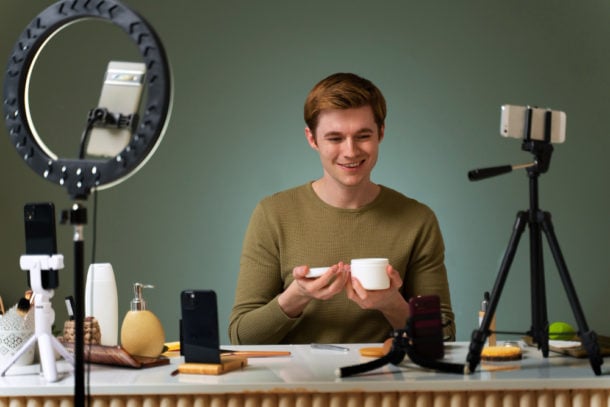
Before you commit to becoming a creator, you need to understand what the day-to-day reality actually looks like. The creator lifestyle shown on social media is highly curated. The real work involves unglamorous tasks, psychological challenges, and constant adaptation. This isn’t meant to discourage you—it’s meant to help you make an informed decision with realistic expectations.
The Unglamorous Daily Reality
Creator content showcases highlights, but the daily reality involves substantial unglamorous work.
Video creators spend hours editing footage that becomes 10-minute videos. Writers research topics, draft posts, revise multiple times, and format for publication.
Podcasters handle equipment setup, conduct interviews, edit audio, write show notes, and coordinate promotion.
The time investment truth
Successful content creation typically requires 20-40+ hours weekly when building businesses from scratch.
This includes content creation, community engagement, business administration, learning new skills, and strategic planning.
The creators who succeed either commit substantial time or build teams to handle increasing workloads.
Can you realistically commit 20+ hours weekly to building your creator business?
The Psychological Challenges
Public creation involves dealing with criticism, comparison, and occasional trolling.
Even successful creators face imposter syndrome, creative blocks, and motivation struggles. The constant pressure to produce content, maintain relevance, and grow audiences creates stress that surprises many new creators.
The comparison trap
You’ll constantly see other creators apparently succeeding faster, creating better content, or finding easier paths to monetization.
This comparison nearly always misleads. You’re comparing your behind-the-scenes struggles to others’ highlight reels.
The creators who succeed develop practices to limit unhealthy comparison while maintaining competitive awareness.
The sustainability requirement
Building support systems, setting boundaries, and maintaining life balance separate creators who build decade-long careers from those who burn out after 18 months.
If you’re entering creator economy, prioritize sustainable practices from the beginning rather than sprint tactics that work short-term but fail long-term.
What boundaries will you set to protect your mental health?
The Constant Change
Platform algorithms change constantly. Content trends shift rapidly. Audience preferences change continuously.
What works today may stop working tomorrow, which requires creators to adapt constantly while maintaining core brand identity.
The learning requirement
Successful creators commit to ongoing learning. They study algorithm changes, test new formats, adopt new tools, and refine strategies based on performance data.
The moment you stop learning and adapting, your creator business begins declining.
The opportunity in change
Rapid change creates opportunities for creators willing to experiment early with new platforms, formats, and monetization methods.
The creators building audiences on TikTok in 2019, YouTube Shorts in 2020, or Substack in 2021 benefited from early-mover advantages.
Staying aware of opportunities while avoiding every shiny object creates strategic advantages.
Are you positioned to experiment with new platforms when they appear?
Your Path Forward
The creator economy offers genuine opportunities to build businesses around your expertise, creativity, and personality.
The market has grown to a $250+ billion industry with over 207 million active creators worldwide, which demonstrates sustainable demand for quality content across countless niches.
But success requires strategic thinking beyond “create content and hope it goes viral.”
The creators building sustainable businesses choose paths that match their skills and interests. They commit to consistent creation over months and years. They diversify across platforms and revenue streams. And they treat creator work as legitimate business requiring professional management.
Whether you’re drawn to written content, video creation, audio storytelling, or new formats, understanding the full spectrum of creator types helps you make informed decisions about your path forward.
Your next steps
Choose the creator type that aligns with your natural strengths. Pick your primary platform based on where your audience actually spends time. Commit to publishing consistently for the next 90 days minimum. Build with long-term sustainability in mind rather than chasing short-term viral success.
The creator economy rewards those who provide genuine value to audiences, build authentic relationships, and develop professional business practices.
If you’re willing to commit to the work required, the opportunities have never been more accessible or diverse.
The question isn’t whether content creation works as a business model. Millions of creators prove it does every single day.
The real question is which type of content creator you’ll become and how you’ll build your unique path in this changing space.
What will you create first?
Frequently Asked Questions About Types of Content Creators
Get answers to the most common questions about choosing your creator path in 2025
What’s the easiest type of content creator to start as?
TikTok creators and bloggers have the lowest barriers to entry. TikTok needs just a smartphone and creativity, while blogging requires only web hosting at $5-20 monthly. Newsletter writing on Substack starts completely free. These paths let you start immediately without significant financial investment or technical expertise.
How long does it take to make money as a content creator?
Most creators see their first earnings within 3-6 months through affiliate marketing or platform programs. Meaningful income that could replace other work typically takes 12-24 months of consistent creation. Fast-growing TikTok creators might monetize faster, while YouTube and blogging usually require 6-18 months before generating substantial revenue.
Do I need to show my face to be a successful content creator?
No, many successful creators never show their faces. Bloggers, newsletter writers, and podcasters can build massive audiences through written or audio content alone. Even on video platforms, you can succeed with screen recordings, voiceovers, animation, or product-focused content without ever appearing on camera.
Which creator type makes the most money?
B2B creators and educational content creators typically command the highest rates because professional audiences pay more for content that helps them earn money or advance careers. They successfully charge $500-5,000+ for courses and consulting. However, top performers in any creator category can earn six figures annually through diversified revenue streams.
Should I focus on one platform or build on multiple platforms?
Build on 3-4 complementary platforms simultaneously. Give your primary platform 60% of your effort, but maintain presence across Instagram, TikTok, YouTube, and email. This diversification protects you from algorithm changes destroying your business overnight. Platform dependency creates existential risks that smart creators avoid.
How much time do I need to commit weekly to content creation?
Successful content creation typically requires 20-40+ hours weekly when building from scratch. This includes content creation, community engagement, business administration, and strategic planning. The creators who succeed either commit substantial time or build teams to handle increasing workloads as their businesses grow.
What equipment do I actually need to start creating content?
Start with what you have. A smartphone works for TikTok, Instagram, and even YouTube. Bloggers need just a computer and internet. Podcasters benefit from a $100-200 quality microphone but can start with phone recordings. Invest in better equipment after proving audience demand, not before.
Can I use AI tools and still be considered an authentic creator?
Yes, over 80% of content creators now use AI tools for efficiency. Use AI for ideation, drafts, and editing support while maintaining your unique voice and expertise. AI handles repetitive work so you can focus on irreplaceable human elements like personal stories, unique insights, and authentic reactions. The key is AI-assisted, not AI-generated content.
What’s the difference between micro-influencers and macro-influencers?
Micro-influencers have 10,000-100,000 followers and typically achieve 3-6% engagement rates. Macro-influencers have larger audiences but average only 1-2% engagement. Brands increasingly favor micro-influencers because smaller audiences often mean more genuine connections and better conversion rates despite lower follower counts.
Should I start with free content or immediately charge for my content?
Start with valuable free content that demonstrates your expertise. Build trust over 8-12 weeks before introducing paid offerings. Monetizing too early damages audience trust and long-term growth. The creators who rush to monetization without establishing value first almost always fail to build sustainable businesses.
